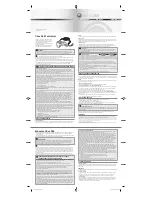
Page 14
4QD series controller instructions.
13 Output current and
Heatsinking
The available output current depends on the
temperature. A typical 4QD-300D controller, into a
stalled motor, will give between 300 and 330 amps
when cold, decreasing as the unit heats up until the
overheat thermostat cuts in. In normal operation, full
current will only be required intermittently in short
busts. However, the controller may warm up
gradually and, if the usage is particularly arduous,
the overheat thermostat will cut the controller off.
The time taken to overheat is load and mounting
dependant and is therefore not easily predicted, but
the heatsink supplied is adequate for most
requirements.
It is good practise if maximum lifetime is required,
for electronic equipment not to be allowed to run too
hot. Therefore, even if the overheat thermostat
doesn’t cut the controller off, if the heatsink runs hot
to the touch then extra heatsinking may be required
or a higher current controller is indicated.
14 Mounting and earthing
It is suggested that the electrical system not be
earthed to chassis. 4QD-series controllers are
isolated from the heatsink and the heatsink will
normally be bolted onto the vehicle’s chassis. If the
system is floating a wiring fault that causes a short to
chassis will cause no damage, whereas if battery
negative is earthed then a short to earth in motor or
wiring would destroy the controller. Such faults are
not likely and the user should make their own
decision on earthing.
Slots are provided at the ends of the controller’s base
for mounting. These will accept an M5 or M6 screw.
Under no circumstances should any other mounting
holes be drilled in the base as this could destroy the
controller. When mounting the controller take great
care that the heads of the mounting bolts cannot
short to any of the controller’s internal busbars.


































